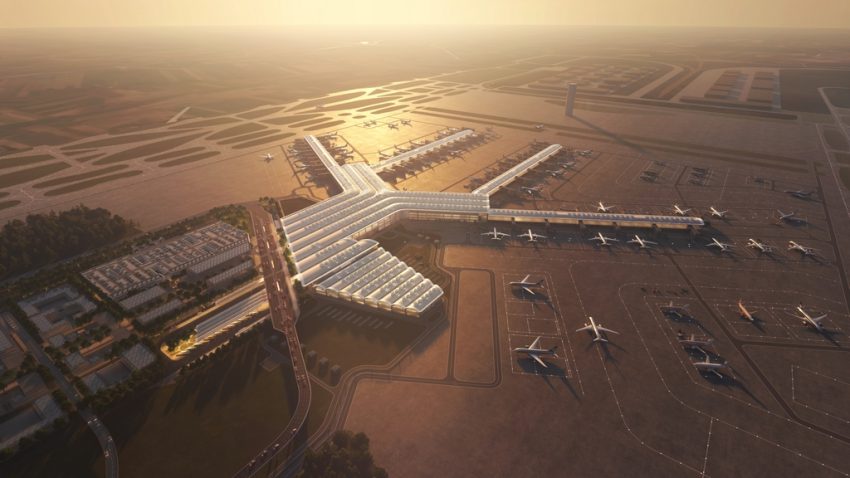As the debate around virtual towers continues across Europe, it’s worth noting a key fact: Poland’s new Centralny Port Komunikacyjny (CPK), one of the most ambitious transport projects on the continent, is not turning to remote tower solutions.
Instead, CPK is moving forward with a full-scale, traditional air traffic control (ATC) tower designed for complex, high-capacity operations — sending a clear message about the continued relevance of physical towers.
A Tower Built for the Future
In late 2023, CPK awarded a design contract to JSK Architekci for what will become the tallest ATC tower in Poland, reaching up to 105 meters. The tower’s operations room will sit nearly 90 meters above the apron, providing direct line-of-sight oversight of runways and taxiways, a level of situational awareness still unmatched by virtual systems.
The tower is being designed in collaboration with Foster + Partners, the architects of the main terminal, ensuring that it fits seamlessly into both the operational and architectural layout of the new airport.
No Remote Tower for CPK
What makes this choice particularly noteworthy is that CPK is a greenfield project, being built from scratch, with no legacy infrastructure constraints. Yet, despite having the flexibility to implement cutting-edge technologies, CPK has not opted for a virtual or remote tower.
This highlights a critical point: virtual towers are not the default future, even under ambitious EU-wide frameworks like the Digital European Sky initiative. The EU does not mandate remote towers; rather, it supports digitalization where appropriate. CPK’s decision shows that in high-traffic, complex environments, a traditional control tower remains the most robust and operationally proven solution.
Why CPK Matters — More Than Just an Airport
CPK is far more than just a new airport. It is part of a multimodal transportation hub that will integrate air, rail, and road networks, acting as a central node for both domestic and international travel. The new airport is expected to:
- Serve up to 40 million passengers annually in its initial phase.
- Become a major intercontinental hub for Central and Eastern Europe.
- Support logistics and cargo operations, strengthening Poland’s role in European supply chains.
- Generate tens of thousands of new jobs, both during construction and once operational.
- Stimulate regional economic development, especially through improved accessibility.
CPK is also a strategic response to the saturation of Warsaw Chopin Airport, and is intended to support Poland’s long-term growth in air travel and economic activity.
Why This Decision Matters
As discussions about remote towers intensify, often framed around cost-saving, staffing efficiency, or digital innovation, CPK offers a counterpoint grounded in operational safety, scalability, and real-world complexity.
The project’s commitment to a staffed, physical control tower signals that even the most modern and future-facing airports still value the situational awareness, resilience, and safety assurance that come with traditional ATC infrastructure.
In short: even with a blank slate and full flexibility, CPK chose what works best , a physical tower, not a virtual experiment!


